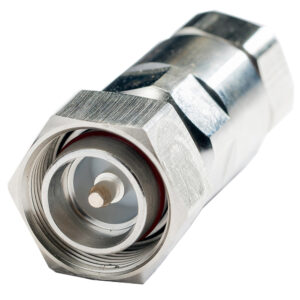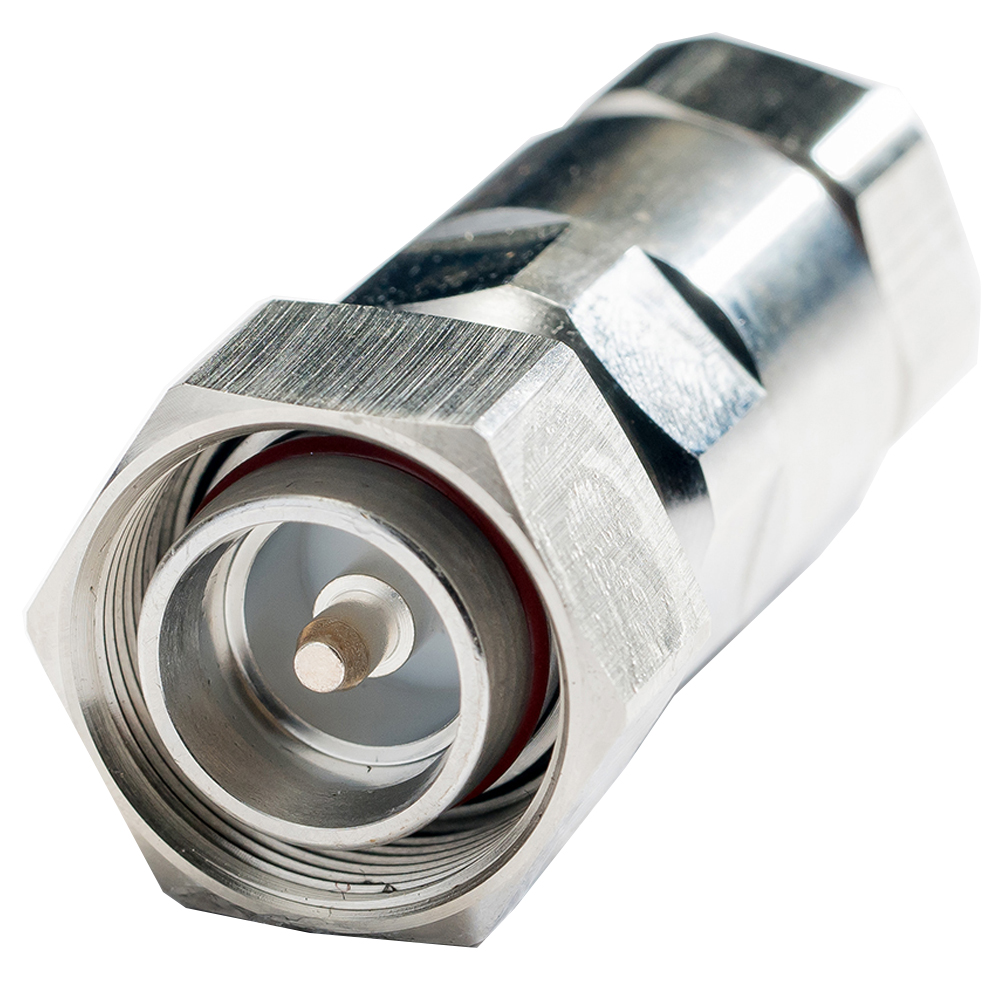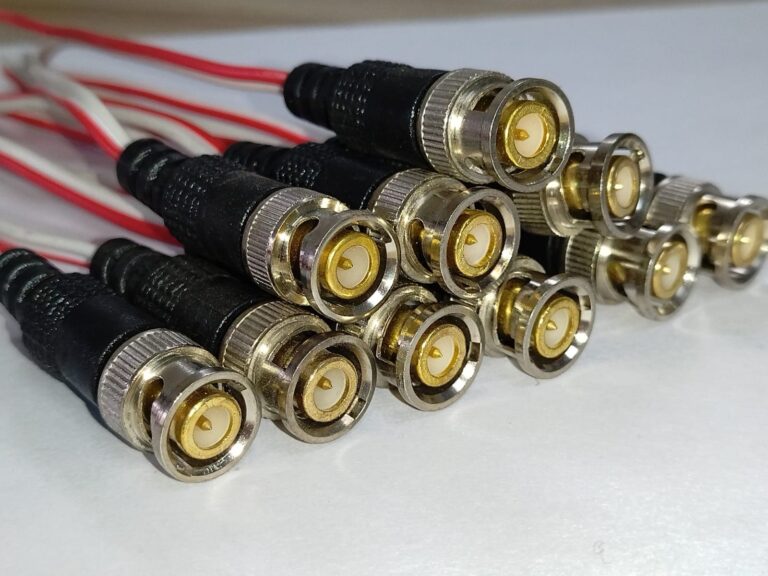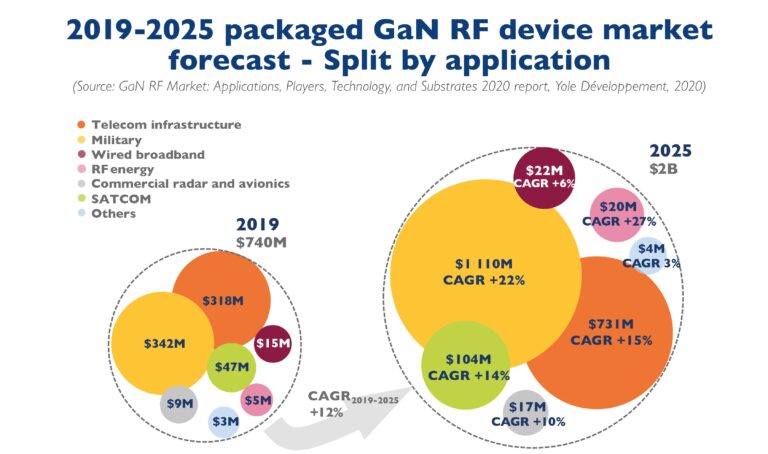4.3-10 RF Connector: A Comprehensive Overview

Introduction
The 4.3-10 connector, also known as 4.3/10, is a 50-ohm RF coaxial connector designed to meet the evolving demands of modern telecommunication systems. Developed collaboratively by leading manufacturers such as Rosenberger, HUBER+SUHNER, Spinner, and Telegärtner in 2013, it serves as a compact, high-performance alternative to the traditional 7/16 DIN connectors, particularly in applications where space, weight, and low passive intermodulation (PIM) are critical factors. WikipediaConnector and Cable Assembly Supplier+1Wikipedia+1
Design and Structure
The 4.3-10 connector’s nomenclature derives from its inner and outer conductor diameters: 4.3 mm and 10 mm, respectively. This design results in a connector that is approximately 40% smaller and 60% lighter than the 7/16 DIN connector, facilitating higher density installations and reducing mechanical load on equipment. CommScope
Key design features include:
- Decoupled Electrical and Mechanical Interfaces: The electrical contact is separated from the mechanical fastening mechanism, ensuring consistent electrical performance regardless of the coupling torque applied during installation. amphenolrf.com+1Connector and Cable Assembly Supplier+1
- Multiple Coupling Mechanisms: The 4.3-10 connector supports three coupling types—screw, hand-screw, and push-pull—allowing for flexibility in installation and maintenance. All three types are compatible with a universal jack, simplifying inventory and deployment. 3rosenberger.com+3Connector and Cable Assembly Supplier+3
- Compact Footprint: The reduced size enables a minimum pitch of 25.4 mm between connectors, aligning with the industry’s move towards miniaturization without compromising performance. Connector and Cable Assembly Supplier+1rosenberger.com+1
Technical Specifications
- Impedance: 50 Ω
- Frequency Range: DC to 6 GHz (standard), with some variants supporting up to 12 GHz. Wikipedia
- Voltage Rating: 500 V RMSmilestonepartners.net+1Wikipedia+1
- Dielectric Withstanding Voltage: 2,500 V RMSamphenolrf.com+8Wikipedia+8RFS World+8
- VSWR (Voltage Standing Wave Ratio):
- ≤1.03 (DC to 4 GHz)
- ≤1.05 (4 to 6 GHz) Radiall+7amphenolrf.com+7rosenberger.com+7
- Passive Intermodulation (PIM): Typically ≤−166 dBc at 2 × 43 dBm milestonepartners.net+4Wikipedia+4Connector and Cable Assembly Supplier+4
- Power Handling: Up to 500 W at 2 GHz milestonepartners.net+3amphenolrf.com+3Wikipedia+3
- Mating Cycles: ≥100
- Temperature Range: −40°C to +85°C milestonepartners.net+1amphenolrf.com+1
- Ingress Protection: IP67 when mated, ensuring resistance to dust and water ingress. Pasternack+2amphenolrf.com+2Radiall+2
Applications
The 4.3-10 connector is widely adopted in various sectors due to its compact size, low PIM, and high-performance characteristics:
- Telecommunications: Ideal for connecting remote radio units (RRUs) to antennas in cellular base stations, supporting technologies like LTE and 5G.
- Distributed Antenna Systems (DAS): Used in indoor and outdoor DAS deployments to enhance mobile coverage and capacity. CommScope
- Small Cells: Supports the densification of networks by facilitating connections in compact small cell installations. CommScope
- Broadcasting: Employed in high-frequency signal transmission for television and radio broadcasting equipment.
- Test and Measurement: Utilized in RF testing equipment requiring stable and repeatable connections.
Advantages
- Compact and Lightweight: The reduced size and weight ease installation and reduce mechanical stress on equipment.
- Low PIM Performance: Ensures signal integrity in environments with multiple transmitters, crucial for modern communication systems.
- Flexible Coupling Options: Multiple coupling mechanisms accommodate various installation preferences and requirements.rosenberger.com+1Connector and Cable Assembly Supplier+1
- Universal Jack Compatibility: Simplifies inventory management and connector mating processes.
- Environmental Resilience: IP67 rating and robust construction make it suitable for harsh environmental conditions.
Considerations
- Torque Sensitivity: While the design decouples electrical and mechanical interfaces, adhering to recommended torque values ensures optimal performance and longevity.
- Compatibility: Ensure that mating connectors are of the same type (e.g., 4.3-10) to prevent damage and maintain performance.
- Installation Tools: Depending on the coupling mechanism, specific tools may be required for installation, particularly for screw-type connectors.
Conclusion
The 4.3-10 connector represents a significant advancement in RF connector technology, addressing the industry’s need for compact, high-performance, and low-PIM solutions. Its versatile design and robust specifications make it a preferred choice for modern telecommunication infrastructures, ensuring reliable and efficient signal transmission in various applications.






